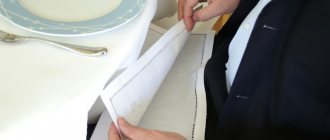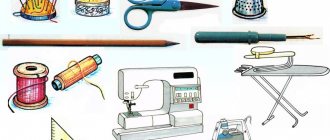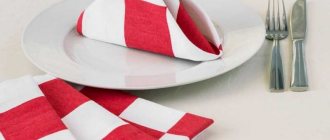Napkin etiquette. 25 ways to fold napkins
At an official reception or at your friends' dacha, you will certainly meet HER
.
It can appear before you as chic, large, small, bright multi-colored or elegant snow-white. But even this will not confuse you if you remember the rule: a linen or paper napkin
has a main purpose, which has been established over the centuries, to protect your clothes from stains.
Even if in front of you is a box with pieces of paper that can be pulled out, which, when used, go straight to the trash bin, in this case you should not neglect the etiquette
.
Rule 1:
If you are given a napkin, use it.
Don't leave it on the table untouched. The napkin is given to wipe your hands and mouth, and also to protect clothes from possible stains. The fact that a person does not use it shows that he is a slob. Rule 2:
Wait until the host of the table unfolds his napkin.
Only after that start working on yours. Rule 3:
If the napkin is too big and falls off your lap, roll it to the desired size.
Rule 4:
In polite society, it is not customary to make sudden sweeping movements at the table.
Don't aggressively shake the napkin to unravel it. Do not dry yourself with a napkin as if it were a towel for morning exercise. Just pat your mouth lightly. Rule 5:
Do not rush to unwrap the napkin, wait until the dish is brought.
Rule 6:
If you must leave the table, leave your napkin on your chair or to the left of your plate.
After eating, place the napkin also to the left of the plate, but in no case on the plate. Rule 7:
Where does the napkin belong?
On your knees. Neither behind the belt, nor behind the collar. Although, if you are in a society where such behavior is acceptable, feel free to follow it. For example, in the south of Italy or New Jersey they serve spaghetti with a wonderful seafood sauce. This dish is best enjoyed without worrying about red stains on your shirt or pants. Many Italians and Americans of Italian descent tuck a napkin into their collar, perceiving it as an integral part of the dish. In their society you can act in the same way. What about waiters with a napkin over their hand? This is convenient from a practical point of view in case of incidents with stains - a napkin is always at hand. This practice originated several centuries ago in France, where the manner in which napkins were worn determined what was for lunch. In general, napkins have been used for thousands of years
.
Varieties
Fabric napkins were traditionally used for decorative purposes: they were folded into figures and decorated with them on the table. Paper ones, in turn, were used for their intended purpose during meals. They blotted the mouth to remove any remaining food.
Today napkins are produced:
- made of fabric (silk, satin, cotton fiber);
- using the patchwork technique (products are sewn from multi-colored materials, the main fabric is decorated with appliqués);
- made of bamboo fiber (used to keep the festive tablecloth clean);
- made of paper (can have different colors, sizes, number of layers and their thickness).
Modern paper products are made from denser materials, which allows them to be given different shapes when serving.
Advantages of paper napkins:
- a wide range of different colors, sizes and shapes;
- low cost;
- aesthetic appeal (suitable for creating complex figures and compositions);
- do not require washing.
Both linen and paper napkins are used as an accessory at the table. Fabric items are often part of the set along with the tablecloth. In this case, the items in the set are made in the same style: they have a similar or contrasting color scheme, pattern and fabric texture.
If there is a double tablecloth on the table, napkins are selected to match the main fabric.
The main function of linen products is to protect guests’ clothing from food particles. The main advantage is that they are reusable. After a meal, they can be washed and used again. Cover your knees with large cloth napkins while eating. In this case, they cannot be replaced with paper ones.
It is not customary to wipe yourself with a linen cloth. To do this, there must be paper accessories on the table.
Textile
Patchwork
Bamboo fiber
Paper
By material
Traditional materials for table etiquette items are natural fabrics, mainly linen and cotton. They have a pleasant texture and are used for table settings in restaurants. But they have their drawbacks. Linen is dense and durable, but wrinkles easily. Cotton textiles are soft, so it is difficult to give such napkins the desired shape.
Table setting options for February 14, popular colors
A more practical option is napkins for the dining table made of mixed fibers (natural and synthetic threads). They wrinkle less, hardly shrink after washing, and stains do not eat deep. In addition, they can be decorated with elegant lace or fringe. When choosing a suitable decor, it is important to remember that the products should look appropriate and harmoniously combine with the interior of the room, dishes, and tablecloths.
Since ancient times, in addition to their intended use, napkins were part of brides' dowries, and needlewomen decorated them with exotic embroidery.
To size
On the textile and paper products market you can find napkins of different shapes: square, rectangular, triangular. They also differ in size. You should choose accessories for a meal depending on where and under what conditions they will be used.
The best option is a square shape measuring 30x56 cm. Rectangular napkins are placed under cutlery at home or in a restaurant. For breakfast or a friendly tea party in the company of several people, you can prepare small items of 35x35 cm. For a traditional home meal, accessories of 40x40 cm are suitable, and for a festive reception of guests, large napkins of 50x50 cm should be prepared.
When preparing for a family meal, use simple ways to fold paper or fabric products: in half, in a triangle, in four, or rolled into a roll. To serve a festive table, they can be folded in more complex ways: with a sail, a candle, a cap. Folded napkins should be placed on each dinner party's plate.
Since the table should be decorated in a certain style, all napkins should be folded the same way.
Junk
| 1. Fold the napkin in half (fold on the right). | 2. Fold the rectangle in half again. |
| 3. Bend the bottom half diagonally upward. | 4. Fold the left corner forward. Bend the right corner forward in the same way. |
| 5. Fold both protruding corners back. | 6. Fold the napkin along the longitudinal axis back. |
| 7. Holding the folded corners with your hand, we pull out the edges of the “sail” napkin one by one. |
Handbag
| 1. Fold the napkin in half vertically (fold on the right). | 2. And fold it in half again from bottom to top. |
| 3. Fold two layers of the upper left corner towards the center. | 4. Fold the upper right corner towards the center. |
| 5. Bend the resulting triangle down along the line just below the middle. | 6. Fold the upper right and left corners towards the middle. |
7.
Bend the resulting triangle down onto the first triangle.
9.Asian fan
1. Initially, the napkin lies with the wrong side down. Fold approximately 1/4 of the top down. 2. Turn the napkin over. Fold approximately 1/3 of the bottom up. 3. Fold the napkin in half from bottom to top. 4. Fold the resulting figure into an accordion shape so that there are five even folds. 5. Holding the open side in your hand, pull out the deep folds in the upper part in opposite directions and fix them. 6. Open the fan.
11. Table fan
1. Initially, the napkin is folded in half with the front side out (fold on top). Gather three quarters of its length into an accordion, folding the first fold down. 2. Fold the resulting shape in half so that the folds are on the outside on the left side, and not the folded part on the right. 3. Take the napkin in your hand so that the open ends of the folds are facing up. 4. Fold the unfolded part of the napkin diagonally to form a “stand”, as shown in the photo. After this, tuck the “stand” between the folds and place the napkin on the table.
How to fold paper napkins
Folding napkins for table settings can also be luxurious if you choose colorful and vibrant paper accessories. The perfect solution would be to complement the presentation with fresh flowers to match the selected components. How to fold paper napkins for table setting in the shape of a flower? Step by step it looks like this:
- Lay the accessory face down on the table. All edges are bent towards the center. The result should be a rhombus;
- We perform identical actions again.
- We turn the structure over and do it all over again.
- Take the napkin by the edge and lightly, with gentle movements, turn the resulting pocket outward. This is how a flower petal is formed.
- Fix the future flower in the center with your finger and form the remaining number of petals.
Folding napkins for table settings can also be luxurious if you choose colorful and vibrant paper accessories.
How can you fold napkins for table setting? There are a huge number of different options, for example, star, swan, fish, boats. These diagrams involve the use of origami techniques. Such simple techniques for folding napkins can be implemented by every housewife; children can be involved in the process.
For example, a child’s birthday will become colorful and unforgettable if you make a boat. How to fold napkins for table setting in this way? We present to your attention a step-by-step diagram:
- You will need to take a rectangular table accessory.
- Fold the top corners toward the center.
- Fold all bottom edges up on each side.
- Fold the corners inward to form a triangle.
- Bring 2 corners towards each other. After completing the actions, a diamond should appear.
- Fold the bottom corners up toward the front side. It will take the shape of a triangle.
- Fold the corners at the base of the triangle together to create a square shape.
- Move the corners of the square in different directions.
This simple pattern allows you to make a small boat out of plain paper. Little participants in the feast will appreciate the efforts. The rules for folding napkins for the table are simple - use your imagination, study the diagram and start the process. This will guarantee success in decorating a meal or dinner feast.
A child's birthday will become colorful and unforgettable if you make a boat.
Jabot
1. Initially, the napkin is folded in half (fold at the bottom). 2. Fold the napkin in half again (the open corners are at the top right). 3. Bend the top corner down diagonally and fold it like an accordion in the direction of the diagonal fold. 4. Accordion fold in the direction of the fold the next corner at the top right. 5. Fold the bottom corner under the napkin. The right one is also folded under the napkin.
1. Initially, the napkin is folded in half with the front side inward (fold at the bottom). 2. Fold a third of the top layer down to create a center fold. 3. Turn the opposite side towards you. Fold the sides over so they meet in the center. Fold it the same way again.
1. Initially, the napkin is folded in four. 2. Fold the corner of the first layer of fabric back 2 inches (5 cm) and repeat. 3. Fold the second layer of napkin, tucking the corner under the diagonal roller to form a second roll that is 1 inch (2.5 cm) wide. 4. Fold the napkin at the top and bottom and place it on the table, orienting it vertically so that the folds remain diagonal.
1. Initially, the napkin lies with the wrong side out. 2. Fold the top and bottom edges of the napkin towards the center. 3. Bend the bottom half upward, holding the fold tightly. 4. Fold the napkin like an accordion (from 4 to 6 folds) 5. Holding the upper part of the figure, pull the lower deep-lying folds forward. 6. Place a fan.
1. Initially, the napkin lies with the wrong side up. Fold the upper left corner to the center. 2. Fold the napkin in half from left to right. 3. Fold the napkin in half along the horizontal axis. Fold the bottom part under the top. 4. Fold the top corner towards the center. 5. Bend the side corners back.
1. Initially, the napkin is folded diagonally with the front side out (fold at the bottom). 2. Complete the upper corner, forming a “bag” 3. Turn out approximately 1/3 of the “bag”. 4. Straighten the resulting figure and give the napkin a vertical position.
1. Initially, the napkin is folded diagonally. 2. Fold up a small strip of fabric at the base of the triangle and turn the napkin over so the right side is facing away from you. 3. Fold the right corner down to the left, and the left corner down to the right. 4. Straighten the corners strictly symmetrically and bend the bottom edge back. The “shirt” can be decorated with a bow or candy cut out of fabric (paper).
1. Initially, the napkin is folded diagonally (fold at the top). 2. Bend the bottom corner up. 3. Bend the left protruding corner down. 4. Fold the right corner in the same way. 5. Fold the left side towards the middle vertical line of the figure. Fold the right side in the same way. 6. Turn the shape over. You can decorate it with a small shell.
1. Initially, the napkin is folded in four with the right side out (open corners in the upper right part) 2. Fold the first layer of napkin fabric diagonally so that the corner is at the lower left point. 3. Fold the second layer of fabric so that its corner touches the central fold. Fold the first corner from below so that it touches the corner at the central fold. 4. Fold the bottom right and top left corners back. 5. Place the napkin on the table in the direction of the cutlery away from you.
1. Initially, the napkin is folded in half with the wrong side inward. Fold both upper corners of the napkin towards the middle. 2. Bend the resulting top down. 3. Turn the napkin over with the front side facing away from you and fold the top corners toward the middle again. 4. Turn the napkin over again away from you and fold the folds from the bottom edge. 5. Place the folds under the square, holding it in the center with your fingers, and fan it out on both sides.
1. Initially, the napkin is folded diagonally (fold at the bottom) 2. Align the two side corners with the top. 3. Fold the napkin so that the bottom corner is 1 inch (2.5 cm) below the top. 4. Bend the top corner down to the fold. 5a. Fold the sides back and insert one into the other to form a circle at the base. 5 B. Place the napkin straight. 6. Lily style
We perform operations 1-5 (see above). To fold the napkin in the lily style, fold the top two corners down.
1. Initially, the napkin is folded in four. 2. Fold the first layer of napkin fabric diagonally so that the corner is at the left point. Fold the second layer back so that the second corner is 1 inch (2.5 cm) from the first. 3. Repeat the above with the third
Posting rules
There are three basic rules for placing napkins:
- on the right side of the device;
- From the left side;
- on a bread plate.
On the right, textile or paper products are placed on a large table so that they do not end up close to the glasses. Napkins are placed on the left if there is no bread plate on the table. But the products should not be located next to the device of the guest who is sitting on the left side. They can also be placed on a plate for bread if it is to be served later. A starched serving item folded in the shape of a fan, lotus or cone is placed on the appetizer plate. It can also be placed on the left, decorated with a serving ring.
In order for the material to retain its original shape well, it should be starched a little a few days before the event. The fabric will become rigid and the figure will retain the desired shape. In order to easily fold the napkin, it should be slightly moistened.
When setting a table for tea drinking, use linen, paper accessories or a combination of both. The optimal size is 35x35 cm. Tea napkins are placed under:
- devices;
- dishes with fruits, canapés, sweets;
- bread plates.
Ideas for decorating a wedding table, popular styles and types of decor
You can place the products beautifully and conveniently on appetizer plates, in a common napkin holder, or next to the cutlery of the participants in the meal. Textile accessories are folded in half and covered the knees. They serve to protect clothing from greasy drops, splashes and food particles. Paper ones - placed under the side of the plate.
It is customary to use paper products to clean your hands and also blot your lips before taking a sip from a cup. Each guest should be provided with 2-3 paper napkins. After tea drinking is completed, the cloth is placed on the left side of the plate; paper products - on a plate.
On the right, napkins are placed on a large table so that they do not end up close to the glasses
Products are placed on the left if there is no bread plate on the table
A starched serving item folded into the shape of a fan, lotus or cone is placed on a snack plate
Textile accessories are folded in half and cover the knees to protect clothing from greasy drops, splashes and food particles
To clean your hands and also blot your lips before taking a sip from a cup, it is customary to use paper napkins.


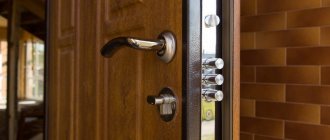
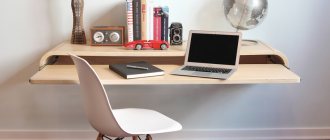

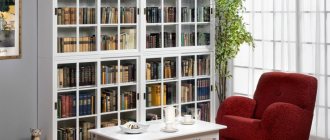
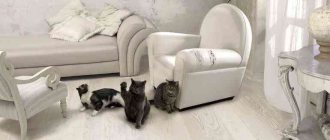
![How to beautifully fold napkins for a festive table: a variety of options [master classes]](https://ecokresla.ru/wp-content/uploads/kak-krasivo-slozhit-salfetki-dlya-prazdnichnogo-stola-raznoobrazie-variantov-master-330x140.jpg)
